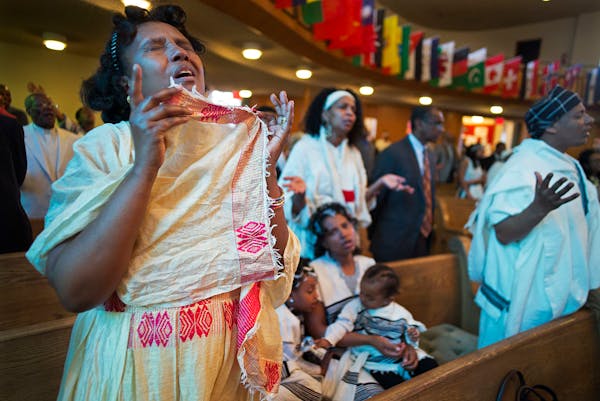Lush forests. Sparkling waters. Warm, sunny days. To many, they offer divine inspiration. But to organized religion, they may not be a blessing.
Minnesota church leaders, now awaiting their lake-loving flocks' return to the pews, now have statistical proof that nature can be tough competition for the pulpit. A new study by Baylor University researchers finds that U.S. counties with the highest volume of "natural amenities" have some of lowest rates of church membership.
Although Minnesota's natural amenities index is considered mid range because of its frigid winters, the state's summer glories offer a clear window into the trend.
"People appreciate the beauty of nature," said Pastor David Stewart of Dayton Avenue Presbyterian Church in St. Paul. "I wish they'd [also] appreciate the beauty of God's being people sharing in the spirit."
Stewart says his church attendance plunges by 30 to 40 percent in the summer, prompting him to hold at least three Sunday services on the lawn each summer.
Membership drops
Researchers — and religious leaders — have long been aware that even the faithful bail out of Sunday services in the summer. But Baylor University researchers Todd Ferguson and Jeffrey Tamburello went a step further, investigating the trend. They looked at whether perfect weather and gorgeous scenery shape membership in religious institutions — not just attendance.
They compared a county-by-county "natural amenities" scale developed by the U.S. Department of Agriculture — based on such factors as topography, water features and average temperatures — with county-by-county religious membership data from the national Religious Congregations and Membership study. They also examined demographic data from the U.S. Census Bureau.
Ferguson came up with the idea after seeing a U.S. map highlighting the natural amenities scale, and noticing "it was a mirror image of religious adherence rates."
"I wondered if that was a fluke, or there was something more to it," said Ferguson, whose findings were published recently in the journal Sociology of Religion.
The study found that counties in such states as California, Oregon and Colorado — which rated among the highest on amenities — had some of the lowest membership in religious institutions. Counties in the Upper Midwest, in particular those bordering Canada, were at the other end of the spectrum.
Ferguson's conclusion: "Nature can be a place where people express their spirituality, which not only impacts individuals — but regions."
Minnesota holds an interesting place in this equation, because its "natural amenities" index could rank with some of the best — in the summer. The faithful aren't ditching church membership, but they are ditching traditional worship, area religious leaders say.
Lori and Jack Mertes of Edina show the challenges this presents to Minnesota churches. The couple, who belong to an Episcopalian church, spend summers traveling, biking, hiking and enjoying the outdoors.
They also shift their churchgoing to Sunday outdoor services at the Lake Harriet Band Shell. From their bench facing the stage, they can see the lake waters glisten, trees sway in the wind and hear the squawk of overhead gulls.
"You feel God all around here, the glory of the world we live in," said Mertes, gesturing toward the water. "We feel spirituality in nature."
The findings also reflect the busy lives people lead, and their desire to make the most of their precious free time, said the Rev. Anita Bradshaw, interim senior pastor at Lynnhurst Congregational United Church of Christ of Minneapolis, who was leading the Lake Harriet service.
"And people don't feel compelled to be in church these days like they used to," she said. "It's not like church holds a monopoly on Sunday anymore."
A deeper look shows that demographics also contribute to lower church membership in some regions of the country, said Laurence Iannaccone, director of the Institute for the Study of Religion, Economics and Society at Chapman University in Orange, Calif. He also is author of the book, "Never on Sunny Days," which demonstrated the link between sunny days and cloudy church attendance.
Stable, tight-knit homogenous communities — such as in the Upper Midwest for years — produce more church goers than mobile and diverse communities — such as in California, he said.
"Social connections drive church attendance," he said.
Pastor Jeff Lindsay of Colonial Church of Edina is among the Minnesota church leaders waiting for those social connections to crank up again. About a third of his church's 1,800 members disappear in the summer. "I love when fall comes," Lindsay said. "The building will be full again. Kids will be running through the halls."
The other good news: "The temptations of the weather aren't as great," he said.
Jean Hopfensperger • 612-673-4511
